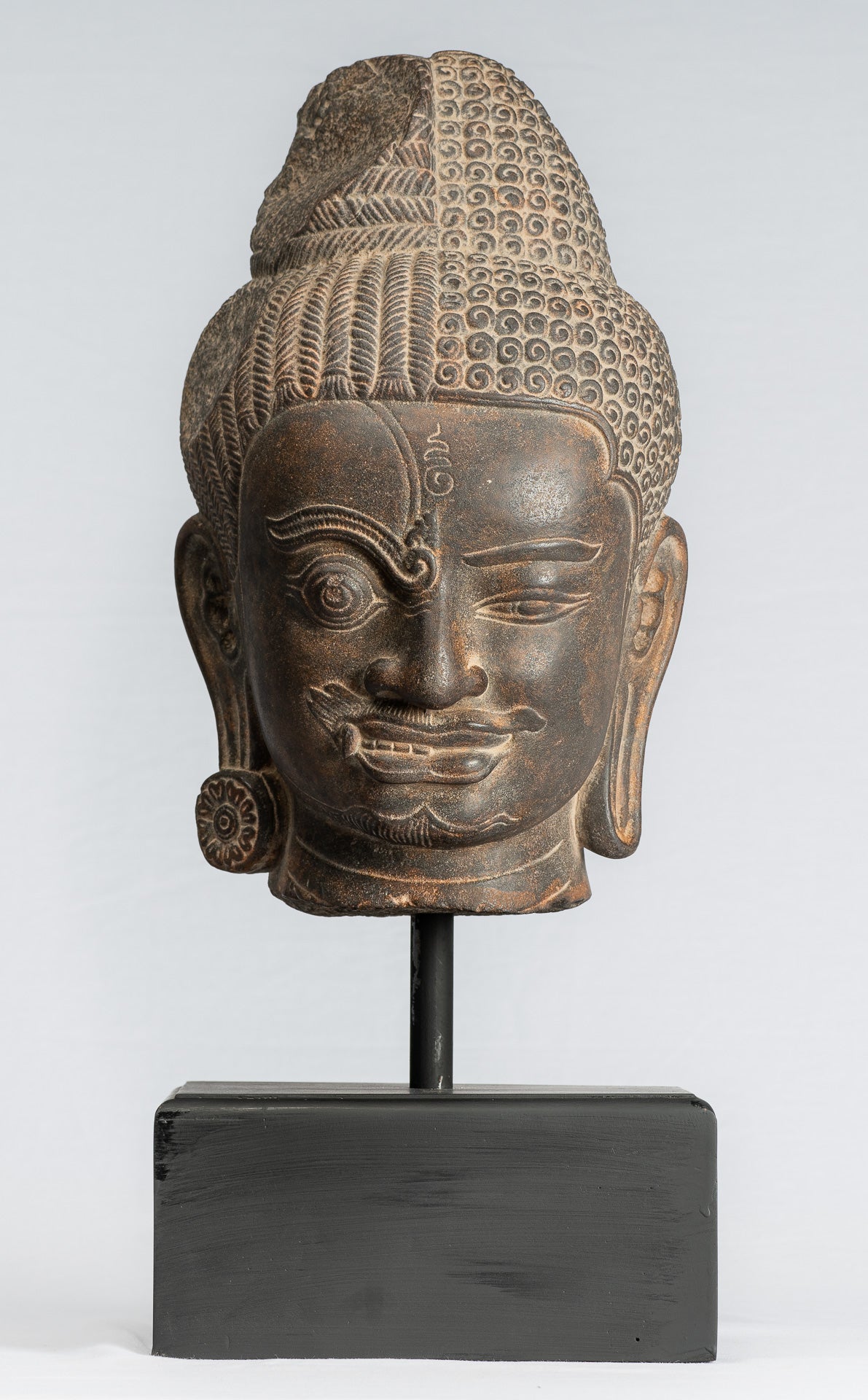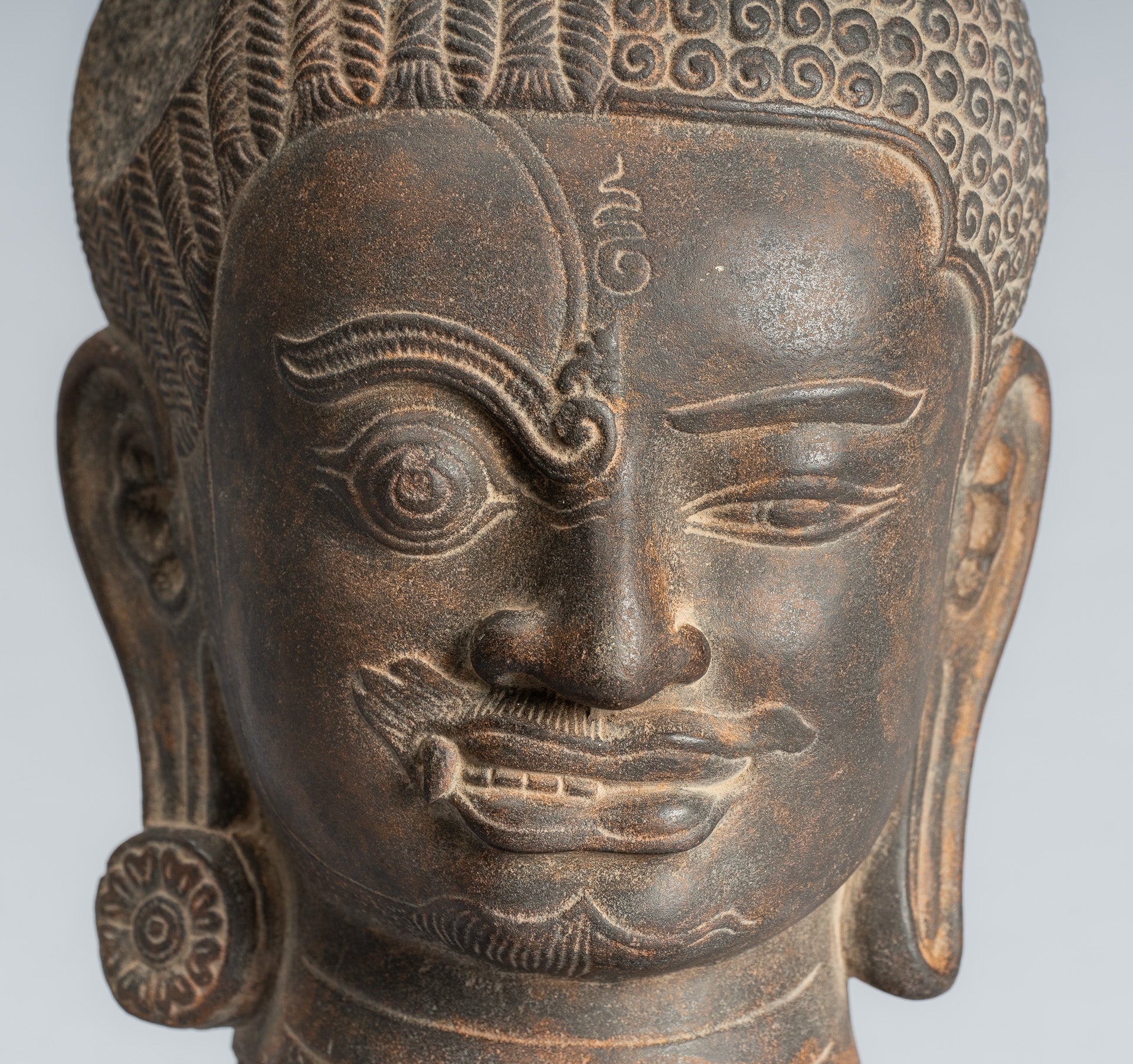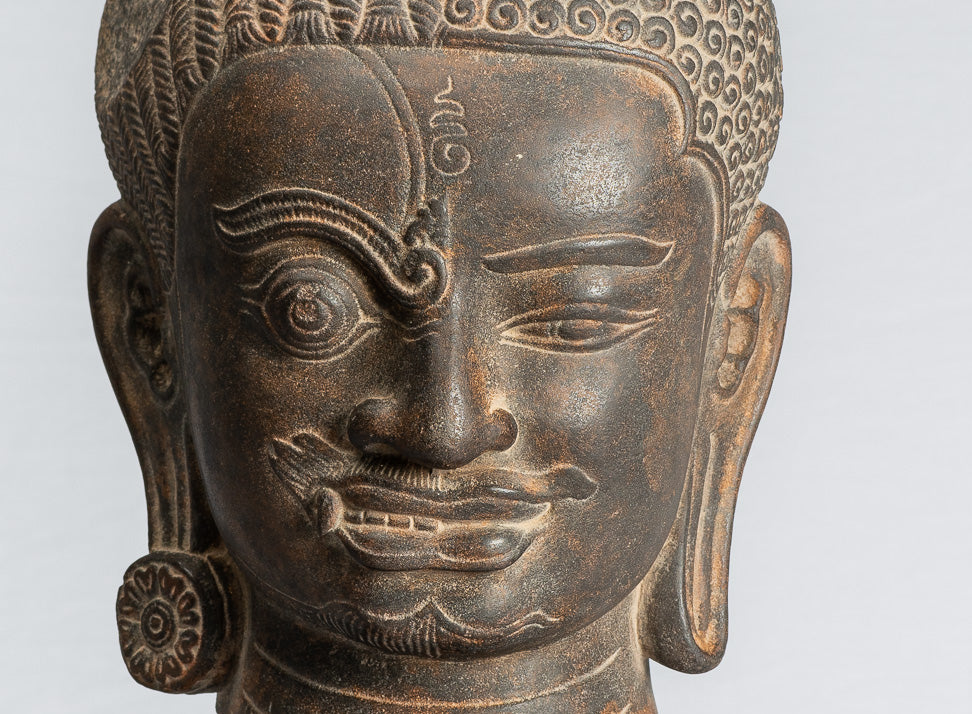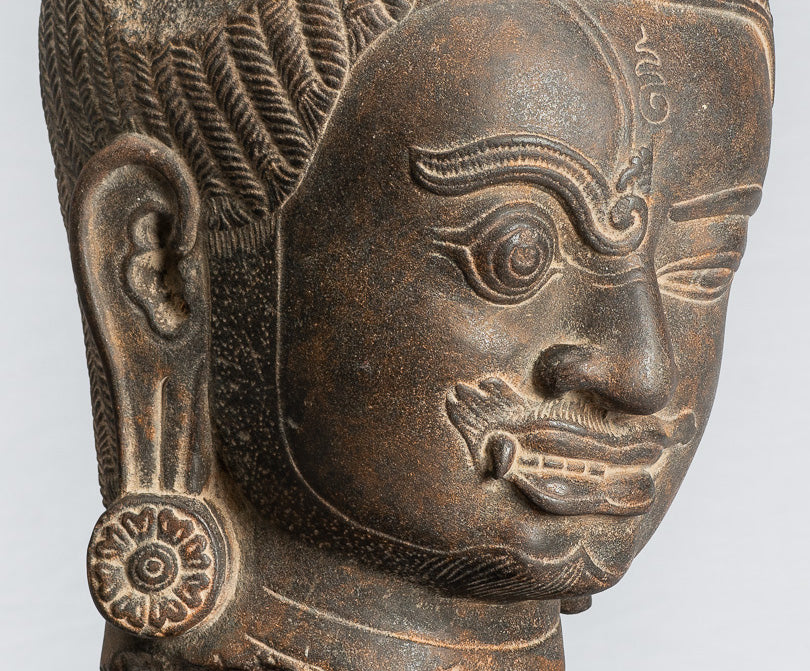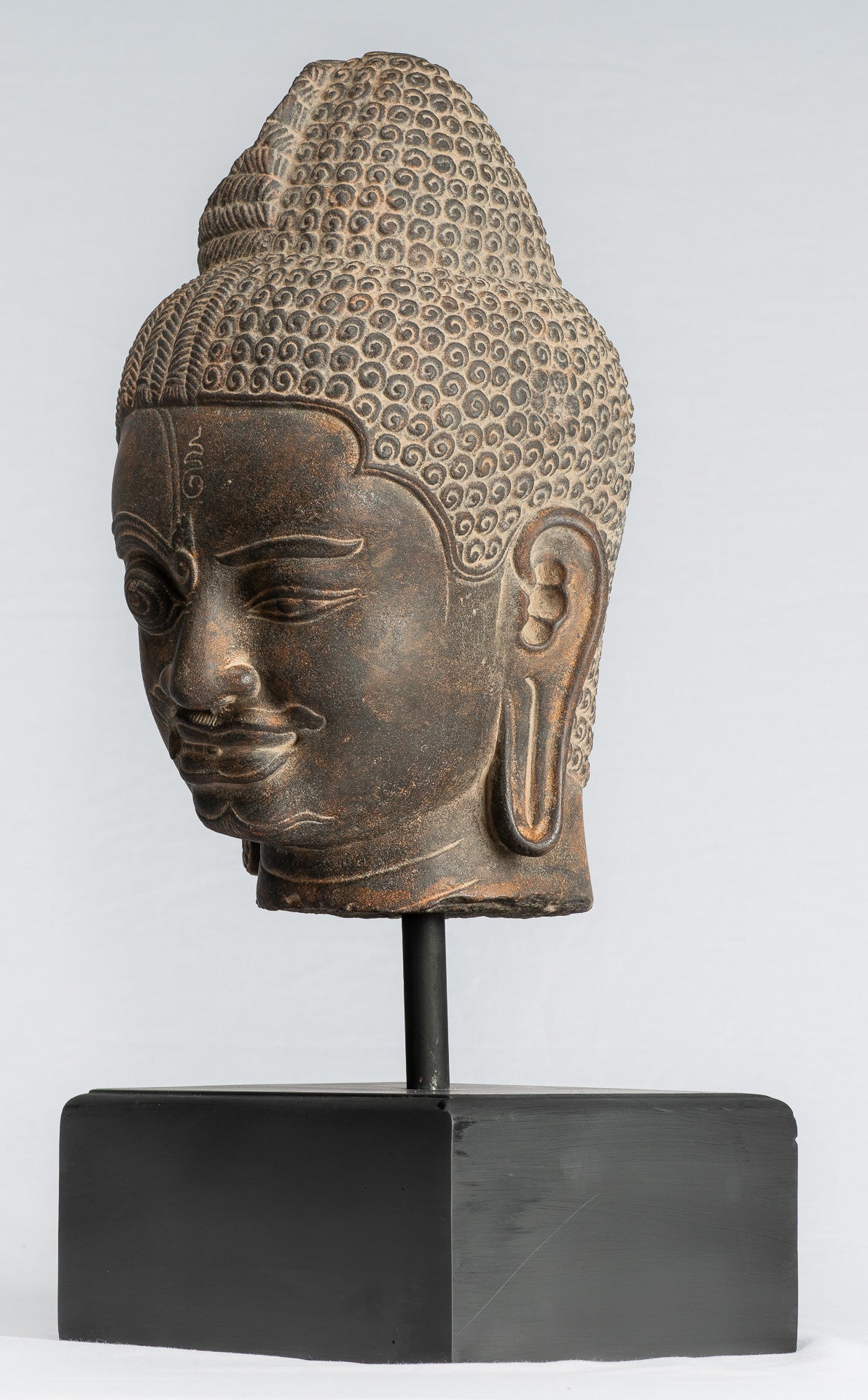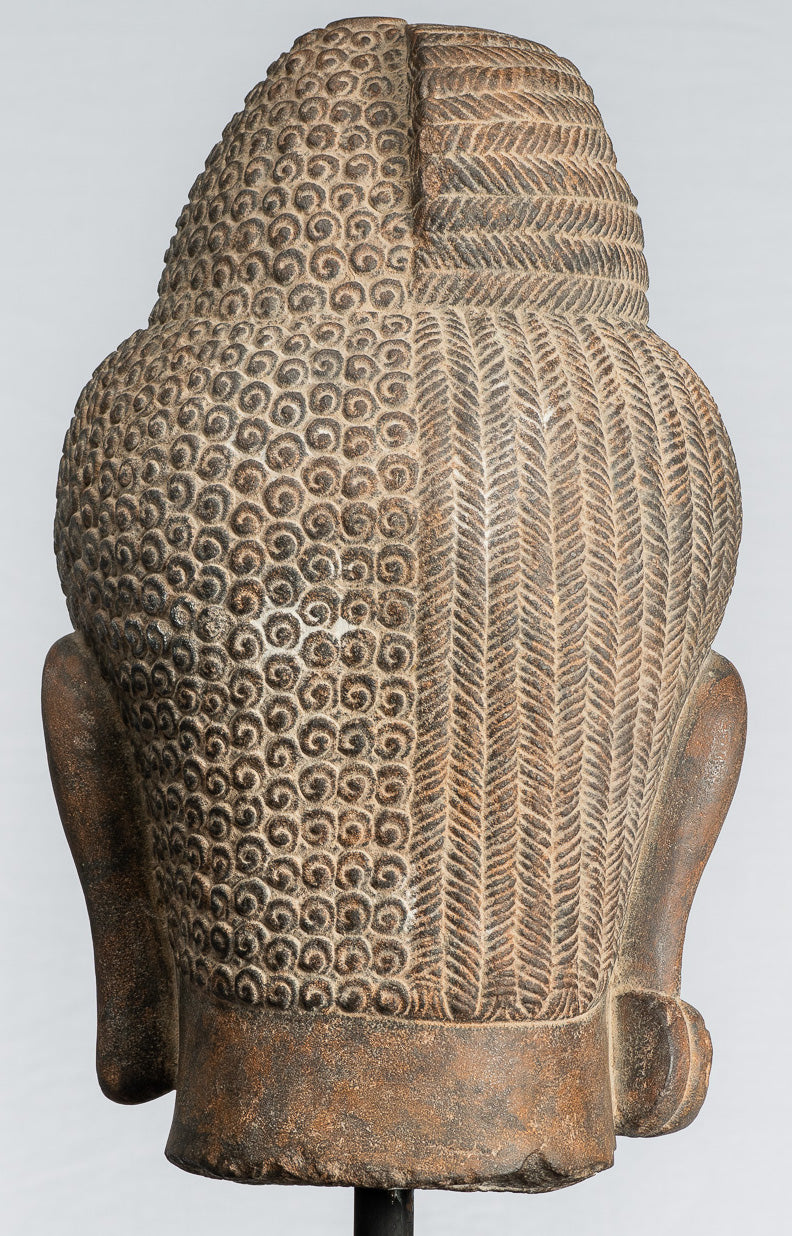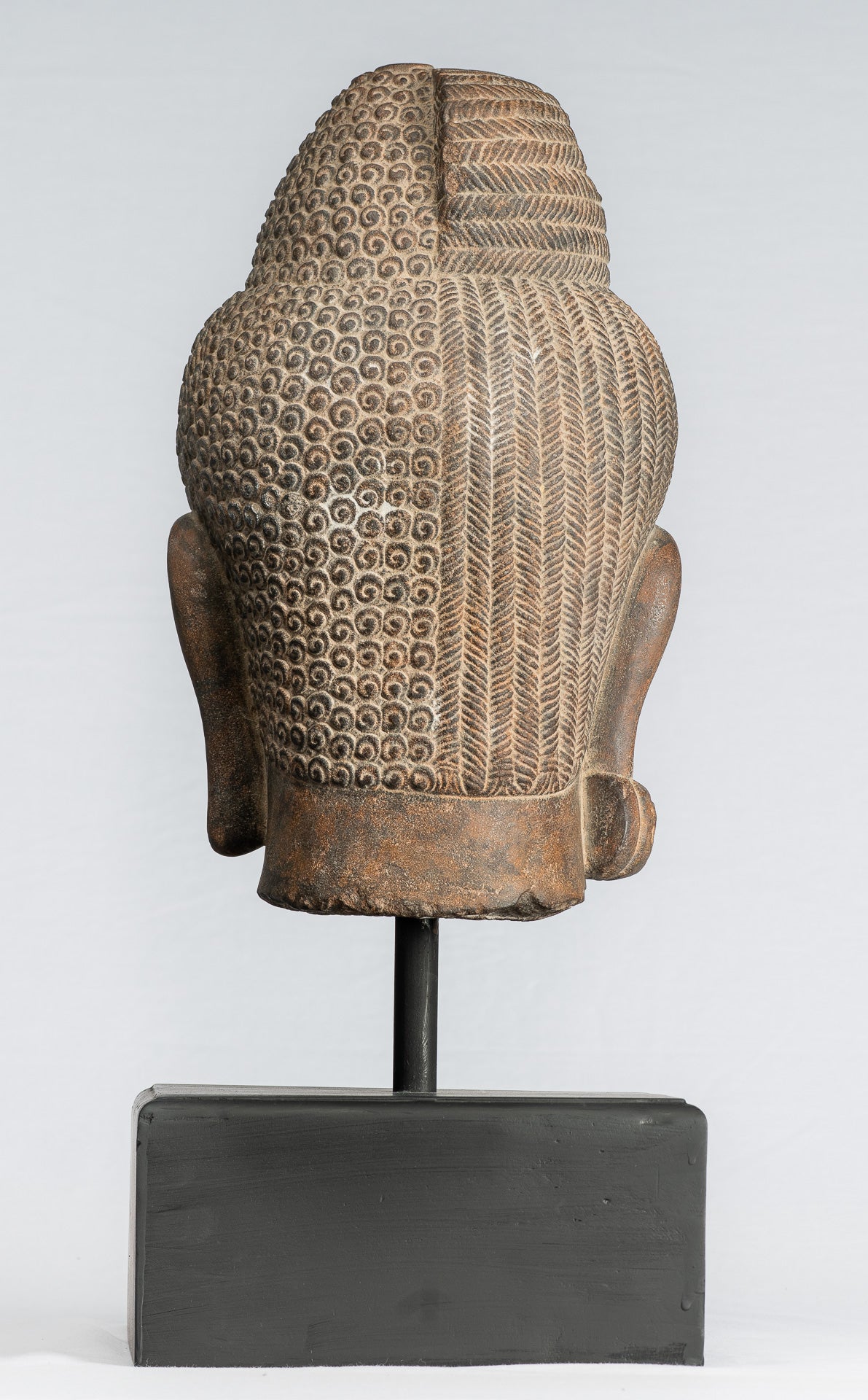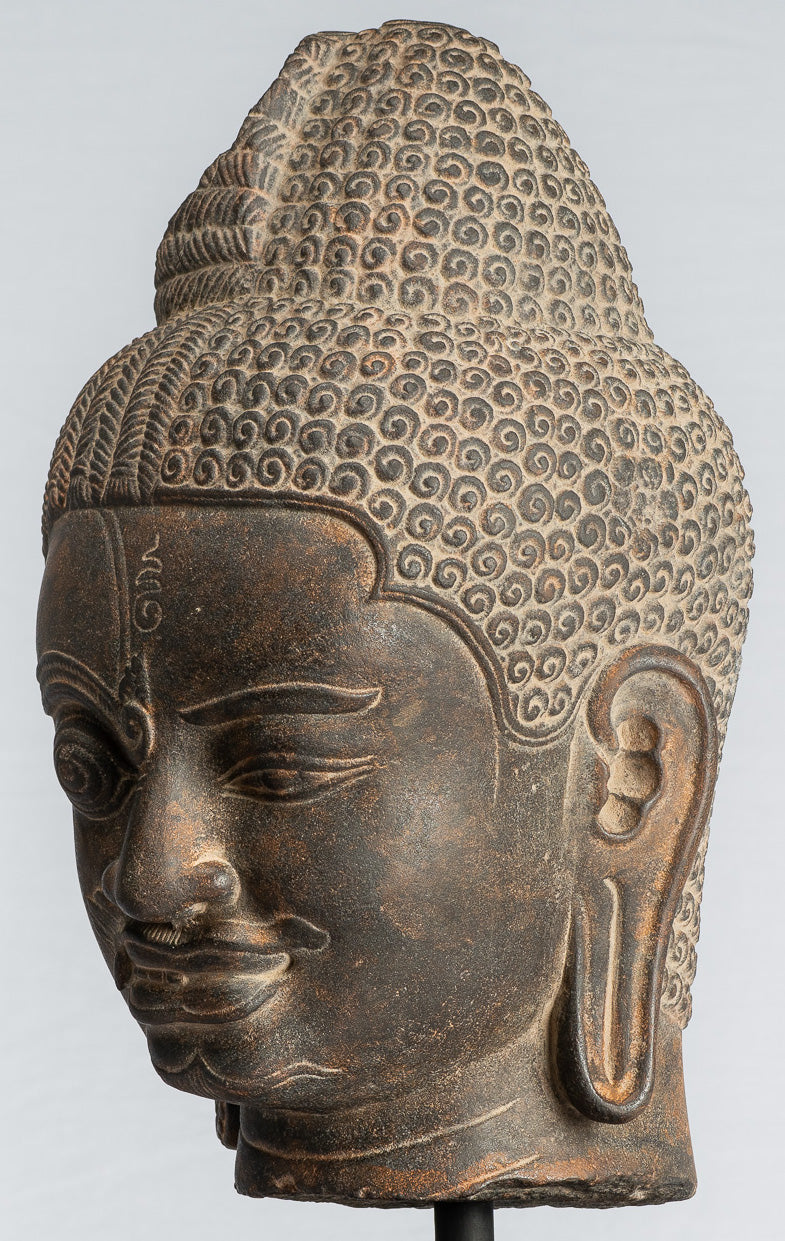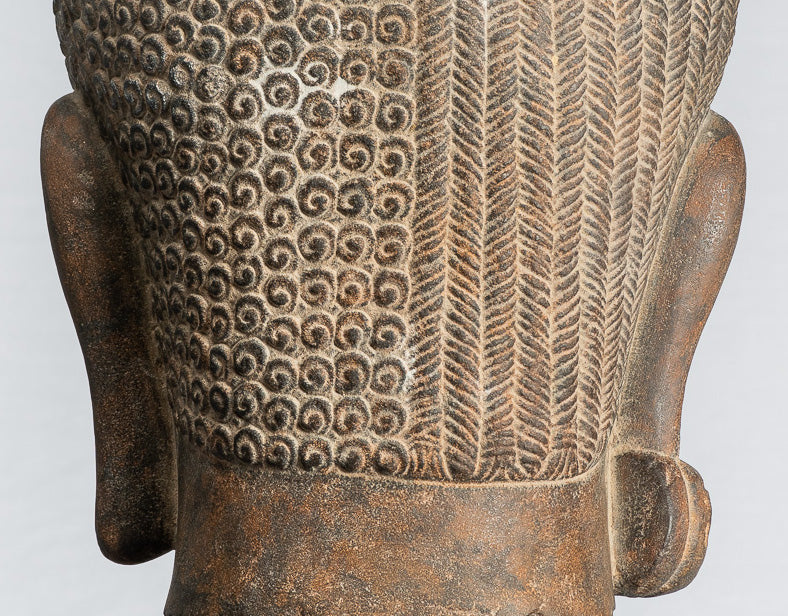-
Shiva Statue - Antique Khmer Style Black Stone Yaksha & Yakshaswaroop Shiva Head - 47cm/19"
Measures - (Height) 47cm/19"
An unusual antique Khmer style stone Cambodian Yakshaswaroop Shiva.
Here Shiva is depicted as both Shiva and a Yaksha - Yakshaswaroop Shiva.
Yaksha are celestial beings who are the caretakers of hidden treasures under the earth and roots of trees. Although Yaksha have distorted form and have devilish appearance they are not harmful to mankind.
This sculpture demonstrates the post-AngkorCambodian interpretation of a story from the Kena Upanishad, where God Shiva took the form of a Yaksha, to curb the arrogance of Devas.
The Kena Upanishad (Kenopaniṣat) is a Vedic Sanskrit text classified as one of the primary or Mukhya Upanishads that is embedded inside the last section of the Talavakara Brahmanam of the Samaveda. It is listed as number two in the Muktikā, the canon of the 108 Upanishads of Hinduism.The Kena Upanishad was probably composed sometime around the middle of the 1st millennium BCE.
"Here the Devas began to feel that the whole world was theirs and no one can defeat them. So God Shiva disguised as a Yaksha went to challenge the Devas.
The Devas sent Agni (the Fire God) to the challenge and to see who this Yaksha was. Agni said, “I can burn anything, I can transform anything.” So the Yaksha threw a blade of grass in front of Agni and challenged him to burn it.However, Agni could not do anything. His energy was not enough to burn the grass. He gives up and accepts his defeat.
Seeing this, lord Indra sent Vayu (wind God), but even the wind was not able to lift the blade of grass. Then Indra himself goes to defeat the Yaksha. But Lord Indra too could not defeat the Yaksha. Then Lord Indra with his divine powers understood that the Yaksha is no ordinary and surrendered to Him, and realised that the Yaksha is Parabrahman Himself.
All the Devas bowed before him, and the disguised Yaksha transformed into God Shiva and blessed them and thus their arrogance was curbed. The Devas learnt a lesson never to underestimate anyone and how much poweful one may be, but when it turns into arrogance, it will for sure lead to their downfall."
The power emanating from this compelling Yakshaswaroop Shiva image characterises Khmer style at its very best. As is typical with the Khmer style the Shiva has a soft face displaying the talents of a master craftsman.
The features suggest the prana, or inner breath, that signifies superhuman power. The figure is presented in its un-repaired condition as found, elegantly modelled from a solid block of dark stone.
As with images from this post-Angkor period, the ornamentation reflects a perfect mastery of sculpting and fluidity. Facial features of the statue retain characteristics of the previous styles, but appear more delicate. The deity is masterfully modelled in realistic human form.
The faces of both Shiva and Yaksha appear typically Khmer, with a serene expression, incised almond-shaped eyes, connected eyebrows above a well-shaped broad nose, wide plump mouth and elongated earlobes. The bulging eye and lotus bud adorned ear of Yaksha is typical of the Khmer style for this deity.Typical of the period, no tiaras or jewellery, decorates the sculpture. The hair is drawn onto the top of the head to form a bulb shaped-chignon. This is characteristic of the style.
The forehead depicts the Unalome. Variously described as representing the 'third eye' and the path to nirvana. In short, the Unalome symbol represents the path to freedom, spiritual awakening, and contentment. Unalome symbolizes our spiritual and life path and reminds us that our journey will not be quick or straightforward, but we must stay focused on our goal.
The power of Shiva is limitless, transcendent and unchanging as he removes all evil from the world. For the devotee Shiva offers protection, guidance and a sense of belonging. Shiva is also regarded as the patron god of yoga, meditation and arts.The Yakshaswaroop Shiva is mounted on wood (later).
This traditional in appearance piece is sure to add a unique touch to any room of your home or workplace.
SATISFACTION GUARANTEE - We have been offering Asian Art, through our website, for many years and are proud of the reputation we have developed for fair and honest listings. However, if for any reason, whatsoever, you are unhappy with your purchase please just let us know and we will provide a full refund. We want you to be 100% happy with your purchase.
-
The majority of orders will be shipped with DHL. This is a secure, express and fully tracked service.
Items less than 2Kg we typically ship using Royal Mail.
Once we receive your order we try to ship all orders the same or next working day.
Large and/or fragile pieces requiring palletising, specialist crating and/or extra packaging may take a little longer. Palletised shipments will be delivered curbside.
All orders over 35 GBP will be shipped free of charge.

-
We genuinely hope that all purchases delight.
However, if they do not, regardless of reason, we will refund all orders upon receipt of the unwanted item. Just notify us within 14 days of receiving your order that you wish to make a return and send the piece back to us with 30 days of delivery.
The Khmer Pancha-Mukha Shiva is one of the most powerful and visually striking forms of Lord Shiva found in Southeast Asian art.
“Pancha-Mukha” means “five-faced”, referring to Shiva’s manifestation with five sacred aspects, each symbolising a different dimension of divine consciousness and cosmic function.



